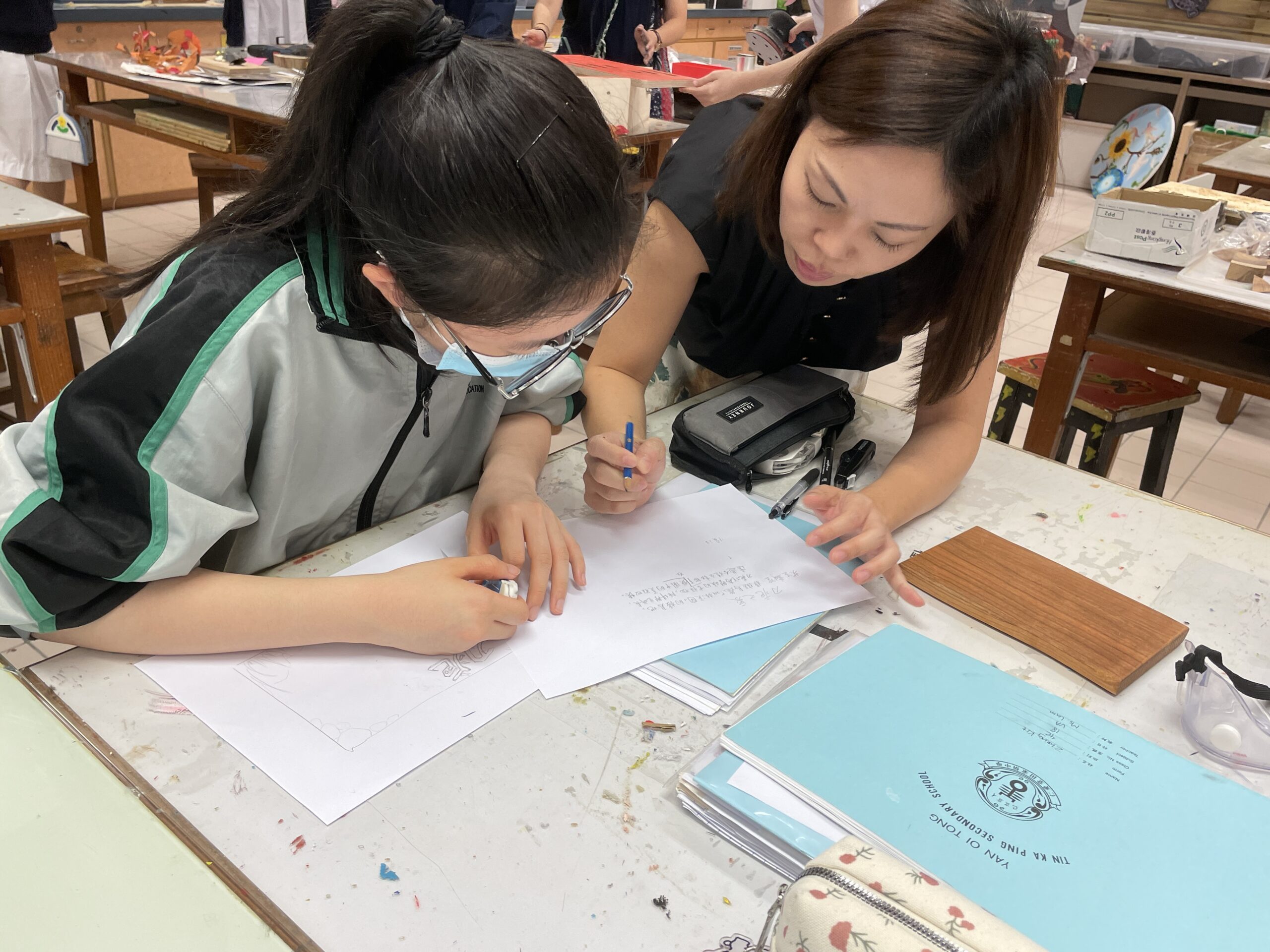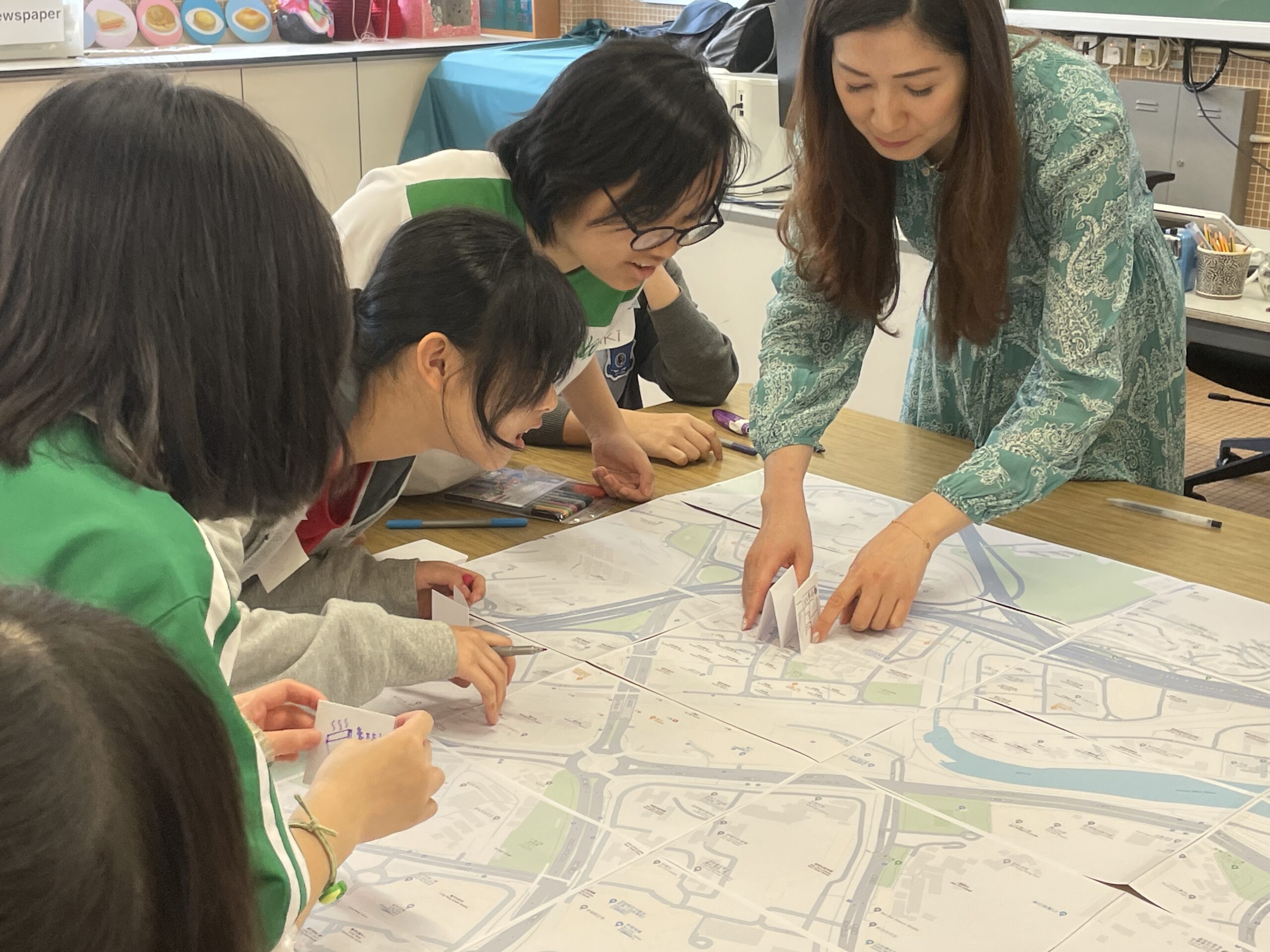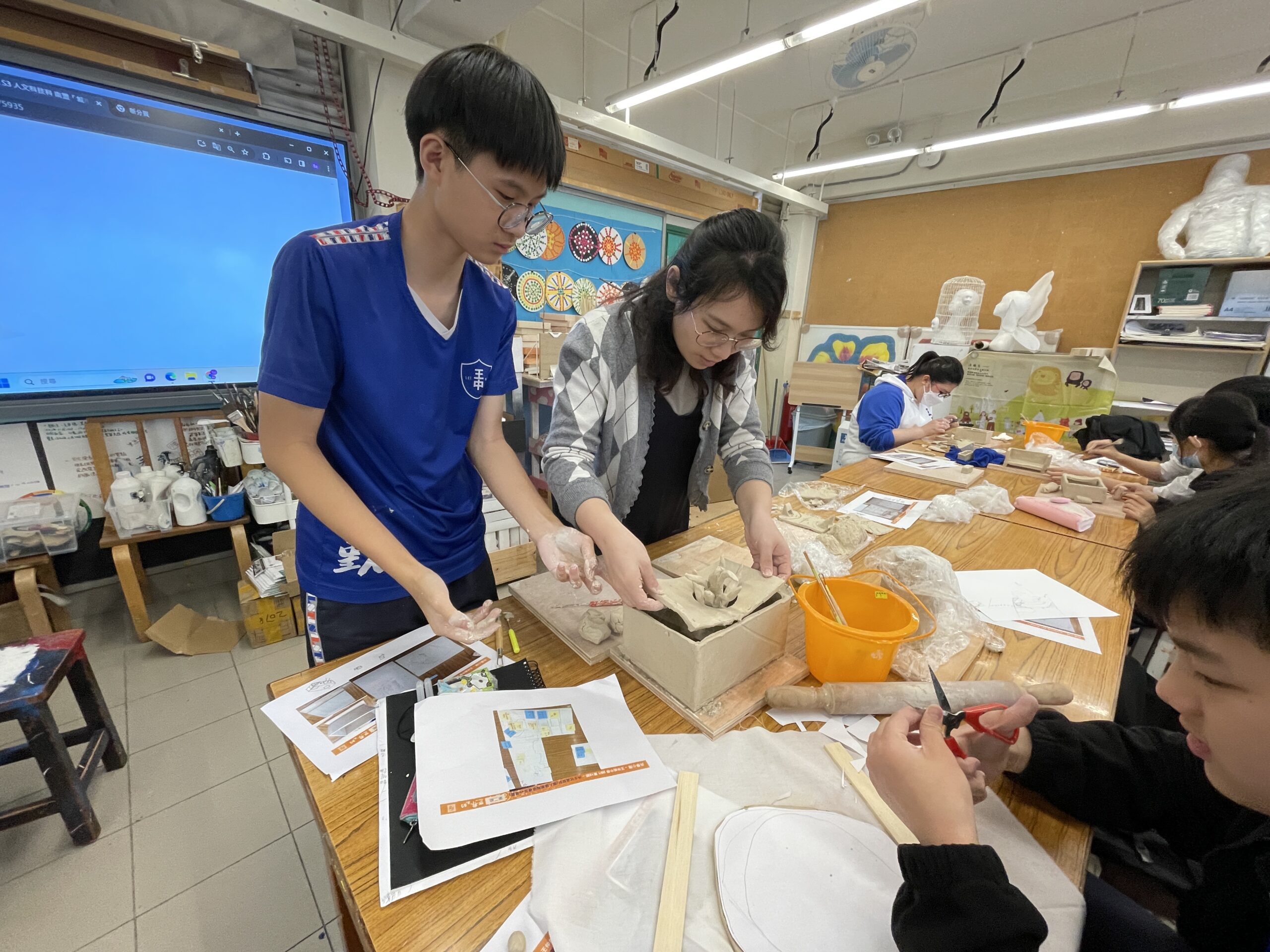1st round 2023 to 2024 Community in Coexistence: Participating teachers’ sharing
Human (students) : Nature

Teacher Miss Lam (Visual Arts) from Yan Oi Tong Tin Ka Ping Secondary School
We are delighted that our Form 4 Visual Arts students were able to take part in Nan Fung Group In Time Of – “Co-learning Squad” workshop this academic year. At the start of the program, students went into the community, beginning with the Tuen Mun River and Tuen Mun Park, and carried out a series of ecological observations—including waterways, parks, the community, and different ecosystems—examined their relationships with urban development to understand the concept of “Living in Coexistence”. Afterwards, they applied the coexistence concept at school back on campus: exploring the relationships between different species living on campus and the school community, they designed “homes for animals”— habitats for species on campus.
I really appreciate that this project focuses on “Living in Coexistence” as its theme. It prompts students to observe from their present environment and to think more deeply about “relationships”. Students come to understand that while they are independent individuals, they also coexist with different species and the surrounding environment. Therefore, considering how to coexist while balancing each party’s needs is an important issue. I also believe this reflection will not end with the project; rather, it can inspire students to cultivate greater awareness in their future lives and extend to encounters across different facets of life. This is another reason I am very fond of this project’s theme.
In this workshop, students learned woodworking and presented their ideas for “homes for animals” in the form of wood-art installations. I am deeply grateful to the artist Chung Wai Ian for her patient guidance, which gave the students a very fresh and enjoyable experience in learning woodworking. I also witnessed the excitement and sense of fulfillment the students showed during the creative process. I’m delighted that, throughout this project, I saw students full of enthusiasm for the diverse things around them and for the world, and that in their own worlds they were able to make space for others, considering and balancing everyone’s needs. It’s a beautiful scenario!

Teacher Miss Tsang (Visual Arts) from Christian Alliance Cheng Wing Gee College
It was the first time for the Visual Arts Subject Department at the Christian Alliance Cheng Wing Gee College in Tai Wai to collaborate with an external organization on a course, which had a positive impact on students’ observation, analytical, and creative abilities. In particular, the extracurricular field trips had helped to cultivate students’ sense of responsibility toward the community, the environment, and animals, and helped them to understand that creating art isn’t just about burying oneself in work inside the art room; it also involves stepping into the community to show reflection on and care for society.
Field-study activities in arts education carry important educational significance for students. By visiting the Tai Po River, Yuen Chau Tsai Park, and a community park near the WWF centre to conduct investigations, students can closely observe the community environment (public and community-run parks) and animal activities (egrets and river fish), further enhancing their observation of their surroundings and their acceptance of animals in the community. These activities help broaden students’ horizons and deepen their understanding of life, art, and culture. Through field studies, students can directly experience and connect with natural landscapes and the community environment, thereby inspiring their creativity and imagination.
One of the on-campus class sessions in this workshop chosen “the journey to school” as a scenario-based learning theme, which helped to cultivate students’ analytical skills. It not only deepened their reflection on and understanding of everyday things that might be taken for granted, but also had a positive impact on their future creativity and expressive abilities, helping them learn to voice out the ideas true fully with courage and to understand that their insights will be likewise valued and appreciated.
The activities also include designing board game–based instruction. During the process, students need to incorporate various innovative elements—for example, creating “sharing cards”—and integrate them with the community maps they designed earlier to complete the project. The diverse task requirements effectively guided students to engage in deeper thinking, enhanced their critical thinking and creativity, and positively influenced their future creative work.
In the seven-session workshop arranged by the “Co-Learning Squad”, instructors combine a variety of teaching activities and field studies to effectively enrich students’ art education experiences and promote their holistic development. Through collaboration with NF ITO “Co-Learning Squad” project, students gain access to abundant educational resources and support services, as well as inspiring learning experiences that help broaden their horizons and deepen their understanding of the connections between creative practice, ecological education, and their own daily lives.

Teacher Miss Choi (Visual Arts) from Lok Sin Tong Wong Chung Ming Secondary School
This year, I am very honoured to once again take part in Nan Fung Group’s “In Time Of” new initiative, the “Co-Learning Squad” project. Their theme is “Living in Coexistence,” with the goal of helping students gain a deeper understanding of the relationship between nature and urban development by designing and creating “Coexistence” ceramic city artworks.
At school, we found that students living in big cities were relatively unfamiliar with the topic of “Coexistence”. As the workshop progressed—through field studies, discussions and exchanges of thoughts, as well as sharing their creative work—the students gradually deepened their understanding of the issue of Coexistence and proactively explored its mysteries. The field trip to the Tan Shan River was the lesson that left the deepest impression on me. The sky was heavily clouded that morning, with a light drizzle. Holding umbrellas, the students slowly hiked up the mountain, we even came upon the fascinating sight of ants moving house. The instructor explained that the rain had soaked their nest, forcing the ants to relocate. The students were thrilled; they all took out their mobile phones to document this rare moment and began discussing the reasons behind the phenomenon. Seeing the students so wholeheartedly engaged in the class, me, as their teacher, was deeply moved and felt strongly of their excitement and joy.
This workshop consisted of twelve sessions. Over the course of it, I observed Wang Chung students gradually learning to observe their surroundings, to ask questions, to get hands-on in solving problems, and to dare to try something new—ceramic art. The project specially invited two contemporary artists to participate: one specializing in ceramics, while another good at creating with different media. Under the guidance of the Nan Fung Group “Co-learning Squad” educators team and our Visual Arts teachers from the Wang Chung arts team, students were increasingly prompted to think and were able to concretely express their personal ideas through ceramic works. Many of the resulting artworks, each with a distinctive style, left teachers and students in awe. This workshop was made possible by the strong support of Principal Xu Siming of Wang Chung and the comprehensive instructional support developed by the Wang Chung arts team. We are also grateful to the Nan Fung Group “Co-learning Squad” for providing such high-quality curriculum on Coexistence, through which students learned about the principles of Living in Coexistence.
Share